When shoulder instability becomes a chronic or recurrent issue—especially after failed conservative treatment—surgical intervention may be the next step. Surgery is designed to restore stability by repairing or reinforcing the structures that keep the shoulder joint in place. There are several techniques, each suited to specific patterns of instability and patient needs. This article provides a detailed look at common surgical procedures, when they’re indicated, and what to expect during recovery.
When Is Surgery Needed?
Surgery is typically recommended in the following situations:
- Recurrent shoulder dislocations, particularly in younger patients
- Labral tears that have not healed with non-surgical treatment
- Significant bone loss on the glenoid or humeral head
- Failure of conservative treatments after several months
- Traumatic instability involving structural damage
- High-demand athletes seeking a reliable return to sports
The goal of surgery is not just to prevent future dislocations, but also to restore full function, strength, and confidence in the joint.
1. Arthroscopic Stabilization
Overview
Arthroscopic stabilization is a minimally invasive procedure that uses small incisions and a camera to guide surgical instruments inside the joint. It’s often used to repair torn ligaments or the labrum—the ring of cartilage that helps hold the ball of the shoulder in its socket.
Common Techniques
- Bankart Repair: Reattaches the torn labrum to the glenoid rim.
- Capsular Shift or Plication: Tightens the joint capsule to limit excessive motion.
Indications
- Anterior or posterior instability without significant bone loss
- Soft tissue injuries such as labral tears
- Athletes or active individuals seeking quicker recovery
Recovery
- Sling for 2–4 weeks
- Physical therapy begins within days post-op
- Return to full activity in 4–6 months
- High success rate for appropriate candidates
2. Latarjet Procedure
Overview
The Latarjet is a more complex, open surgery used for patients with significant bone loss or failed previous stabilization procedures. It involves transferring a piece of bone (the coracoid process) with its attached muscles to the front of the shoulder socket.
How It Works
- Restores bone to the glenoid to prevent future dislocations
- The transferred muscle creates a sling effect, providing dynamic stability
Indications
- Glenoid bone loss (usually over 15-20%)
- Failed arthroscopic repairs
- Contact athletes with high risk of recurrence
Recovery
- Longer recovery period than arthroscopy
- Sling for 3–6 weeks
- Gradual return to sport-specific activities at 5–6 months
- Excellent long-term stability but requires precise surgical technique
3. Other Surgical Approaches
While arthroscopic repair and the Latarjet procedure are the most common, other techniques may be used in select cases:
Remplissage
- Fills a dent in the back of the humeral head (Hill-Sachs lesion)
- Often combined with Bankart repair for anterior instability
Bone Grafting
- Used for severe bone loss or revision cases
- Involves adding donor or synthetic bone to reshape the glenoid
Capsular Reconstruction
- In cases of extreme tissue laxity, especially in multidirectional instability
- May use grafts to rebuild capsule and ligaments
Post-Surgical Expectations
Recovery from shoulder stabilization surgery varies, but most patients follow a structured rehab plan that includes:
- Immobilization: Short-term use of a sling to protect healing tissues
- Rehabilitation: Gradual restoration of movement, followed by strength and stability training
- Return to activity: Timeline depends on the procedure and activity level, but often ranges from 4 to 6 months
A successful outcome depends heavily on following post-op instructions and committing to physical therapy.
Frequently Asked Questions
1. Is arthroscopic surgery better than open surgery?
Arthroscopic surgery offers faster recovery and smaller scars, but open surgery (like Latarjet) may be better for cases with significant bone loss or previous failures.
2. Will I regain full range of motion after surgery?
Most patients recover a full or near-full range of motion, especially with dedicated physical therapy. Some may experience mild stiffness initially.
3. Are these surgeries permanent solutions?
While no surgery guarantees lifetime stability, most procedures have high success rates. Recurrent dislocation after surgery is uncommon with proper rehabilitation.
4. How soon can I return to sports?
Return to non-contact sports may occur around 4 months, while full contact sports usually require 5–6 months and a cleared shoulder evaluation.
5. What are the risks of shoulder stabilization surgery?
Possible risks include infection, nerve injury, stiffness, or recurrent instability, but these are rare with experienced surgical teams.
